What does Autumn smell like to you? For me, it’s none other than… Cassia.
Living in the Midwest, we are blessed to be surrounded by forests that seize the opportunity of autumn to glamorize themselves with brilliant colors. Whiffs of spicy and earthy aromas fill the air, creating an enchanting sensory experience.
I adore using essential oils to capture the essence of autumn and bring those nostalgic scents into my home. One of my favorite oils for this purpose is Cassia Essential Oil. Derived from the Cinnamomum cassia plant, closely related to cinnamon, this essential oil boasts a warm, spicy fragrance that epitomizes the fall season. I especially love using Cassia Essential Oil in candles and various autumn-inspired creations, infusing my home with the comforting warmth of autumn.
What is Cassia Essential Oil?
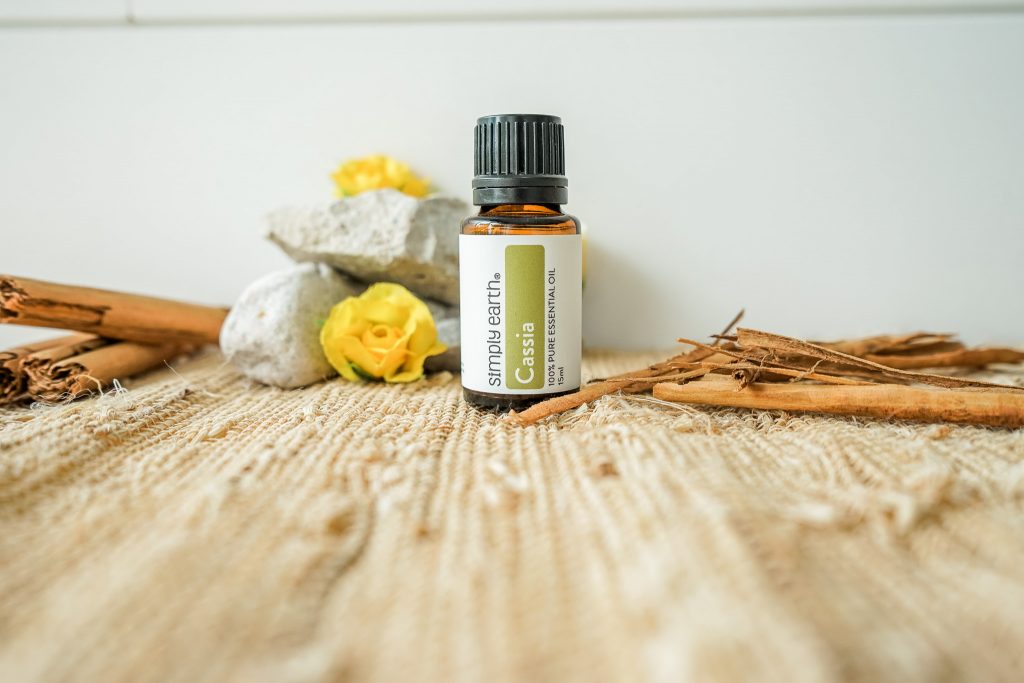
Cassia Essential Oil is a golden yellow to brown oil with medium consistency extracted from the leaves of the Cinnamomum cassia tree which is an evergreen that can grow up to 20 meters tall. The tree is adorned with thick, leathery leaves and white flowers, making it as visually striking as it is olfactorily delightful. The essential oil is obtained through steam distillation which captures its uniquely potent properties. Characterized by its spicy and warm aroma, Cassia Essential Oil holds a medium note which makes it an exceptional addition to your autumn fragrance repertoire.
Cassia Essential Oil Benefits

Cassia Essential Oil offers a wide range of benefits, especially when used during the cozy autumn season. Below are some of the most well-known ways it can enhance your wellness routine:
Promotes Circulation
Cassia Essential Oil creates a warming sensation when applied topically, which encourages healthy circulation. According to this study¹, it may also help ease muscle discomfort caused by poor blood flow. In addition, its anti-inflammatory properties, as noted in another study², make it a natural option for soothing everyday aches.
Supports Women’s Wellness
Thanks to its warming and soothing properties, Cassia Essential Oil may offer relief from common PMS symptoms like nausea, fatigue, and mild cramping. Many people find that its gentle aroma and topical benefits work together to support overall comfort during their cycle.
Uplifts
In addition to evoking the spirit of fall, Cassia’s bright, spicy aroma has been studied for its potential mood-lifting effects. According to this research³, it may act as a natural pick-me-up, promoting mental clarity and alertness.
Cleans
Cassia, like its cousin Cinnamon, contains natural antimicrobial compounds. As one study⁴ shows, it may help purify the air and surfaces when used in DIY cleaning sprays. Moreover, another study⁵ points to its antiviral potential, making it a smart addition during cold and flu season.
Aids Digestion
Traditionally used in Chinese medicine, the Cinnamomum cassia plant may help relieve occasional digestive discomfort, including gas and bloating. Its antibacterial effects also make it a helpful option for supporting digestive health and easing nausea, according to this source⁶.
Boosts Immunity
Cassia Essential Oil is a great addition to your routine during times of seasonal change. Its warming, comforting aroma can help create an environment that feels revitalizing and balanced—perfect for when you’re looking to support your overall sense of well-being.
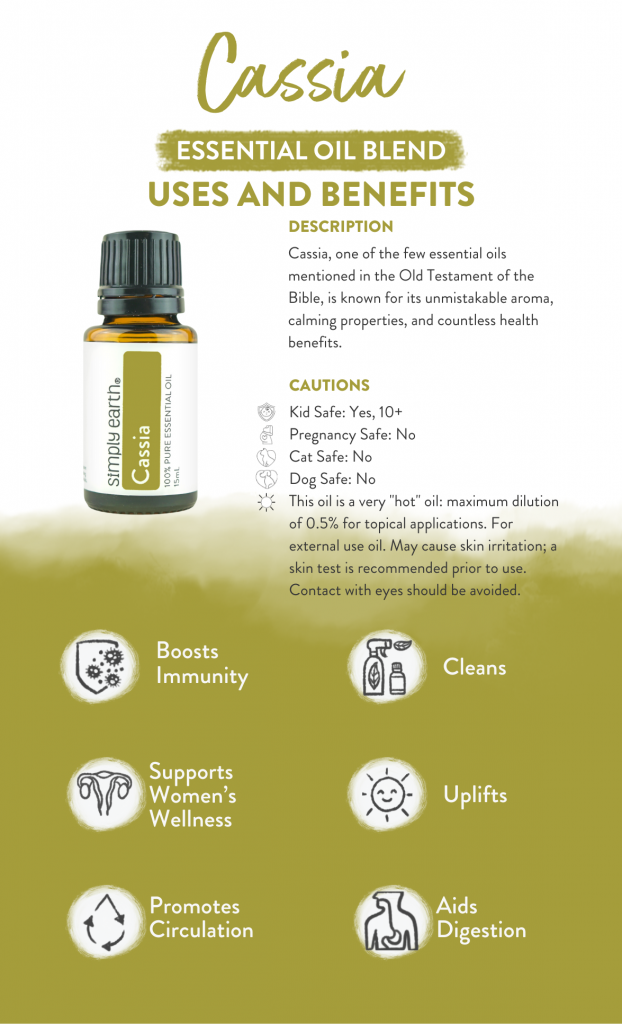
Cassia Essential Oil Uses & Recipes
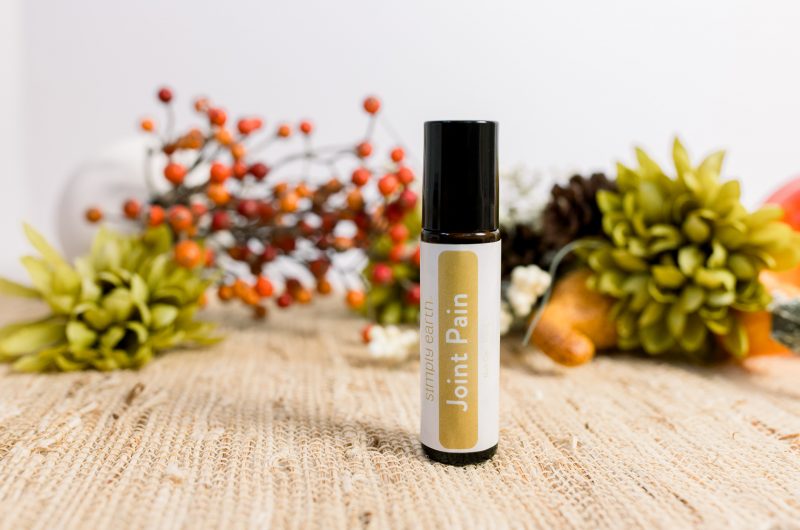
Candle Recipes
Cassia is one of our favorite scents for candle recipes due to its uplifting aroma, which works exceptionally well in candles. Additionally, the warm and spicy scent of Cassia Essential Oil can fill any room with a cozy, autumnal atmosphere, making it perfect for creating a relaxing environment.
- Orange and Cassia Candle
- Cassia and Balsam Fir Candle
- Warm Honey Beeswax Sheet Candles
- Lemonade Stand Candle
- Cozy Nook Candle
- Timber & Citrus Bliss Wax Melts
Inhaler and Roll-On Recipes
Cassia Essential Oil can also be incorporated into essential oil inhalers or roll-on recipes, making it convenient for on-the-go use. These methods allow for aromatic enjoyment and safe topical application to help soothe ailments.
Diffuser Blend Recipes
Cassia Essential Oil is a magnificent addition to your diffuser blend recipes, enhancing the atmosphere with its warm, spicy scent. Not only does it bring the smell of fall into your home, but it also offers numerous benefits, from uplifting mood to boosting immunity.
What This Oil Blends Well With
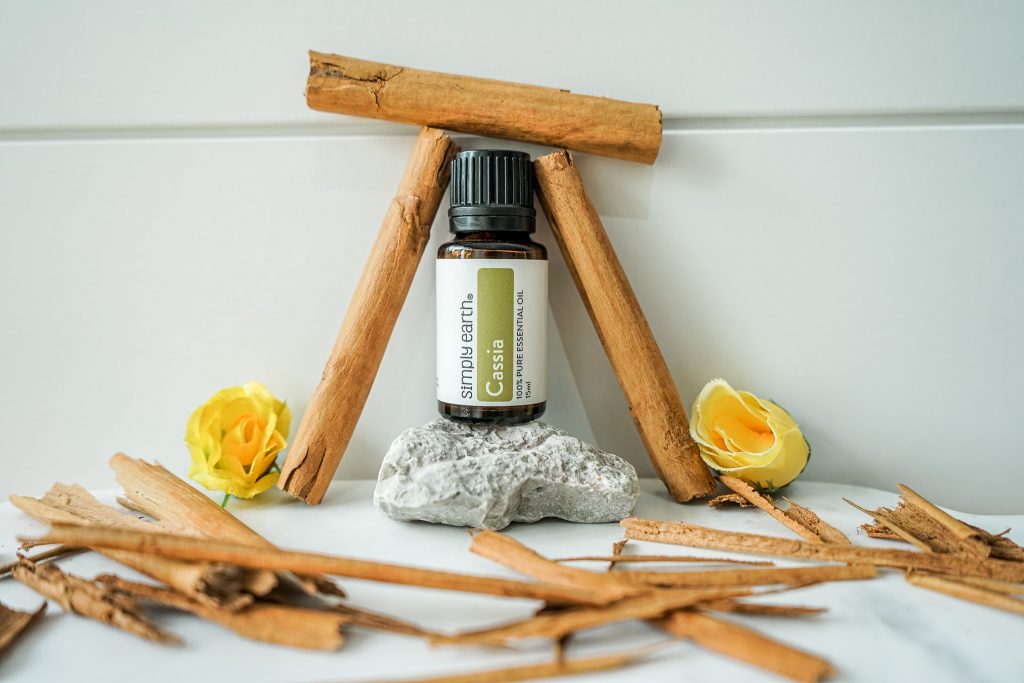
This oil is a close relative of Cinnamon Essential Oil and can often be used as a replacement for it. However, many consider Cassia to have a sweeter aroma than Cinnamon Essential Oil.
Cassia’s spicy, slightly woody, cinnamon-like scent blends well with Cedarwood (Himalayan), Clove, Frankincense, Lavender, Lemon, and Ylang-ylang Essential Oils.
Simply Earth Blends That Use This Oil
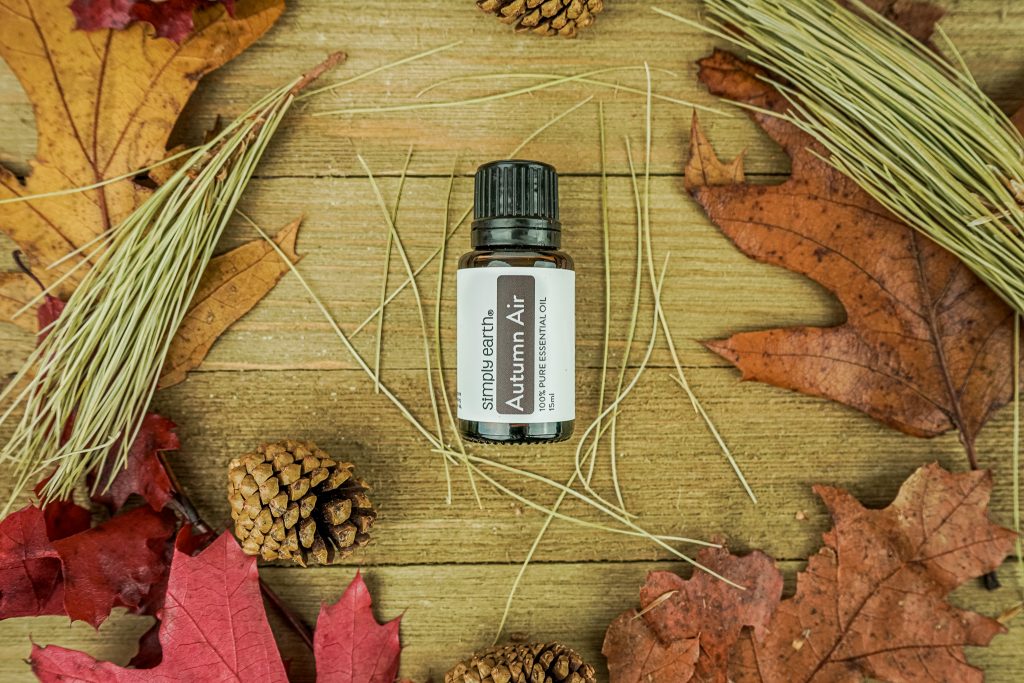
Autumn Air Blend
Aroma: Spicy
Autumn Air Essential Oil Blend has the perfect aroma for Fall. It’s citrusy and spicy, just the right smell to cuddle up with a warm cup of coffee and a sweater. Add a few drops to your diffuser or homemade candle to experience the heartwarming embrace of Autumn Air all season long.
What’s the Science Behind This Oil?
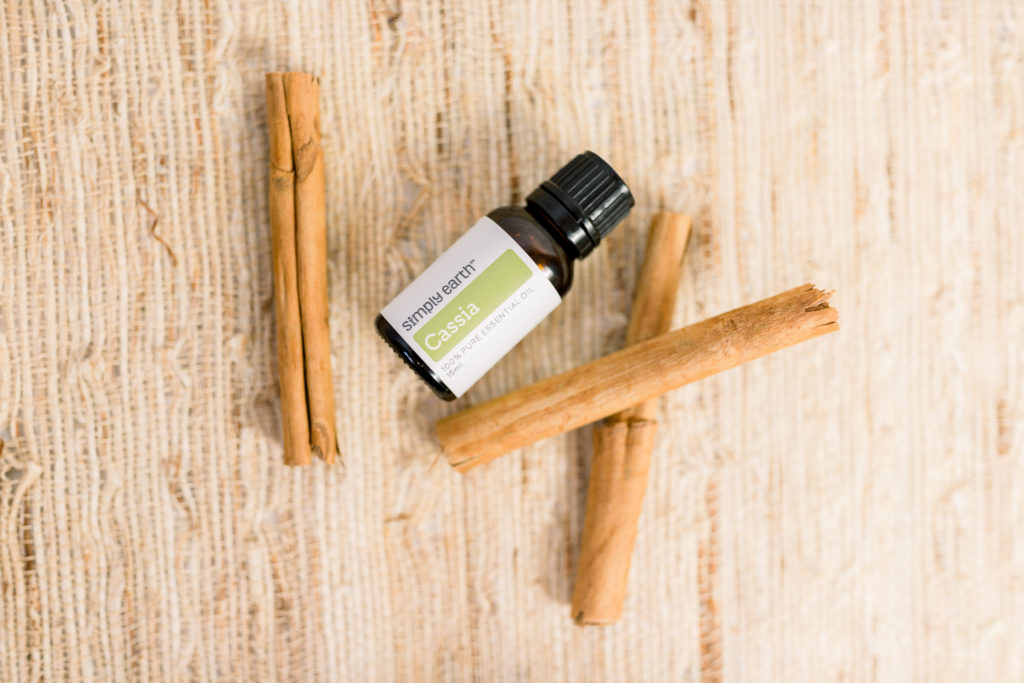
History of Cassia Essential Oil
Not only is Cassia considered one of the 50 fundamental Traditional Chinese Herbs, but it is also one of the oils mentioned in the Bible. It’s known for its unmistakable aroma, calming properties, and countless health benefits.
Chemical Constituents
e- Cinnamaldehyde
Cinnamaldehyde occurs naturally and gives cinnamon its flavor and odor. This pale yellow, viscous liquid appears in the bark of cinnamon trees and other species of Cinnamomum. Cinnamaldehyde’s most obvious application is flavoring chewing gum, ice cream, candy, e-liquid, and beverages. It is also used in some perfumes with natural, sweet, or fruity scents. Cinnamaldehyde has been tested as a safe and effective insecticide against mosquito larvae. It also has antibacterial and antifungal properties. Moreover, it has some miscellaneous uses, such as being a corrosion inhibitor for steel and other alloys.
O-Methoxycinnamaldehyde
Ortho-Methoxycinnamaldehyde is a natural compound of Cinnamomum cassia with antitumor activity. It is commercially and industrially applied as a flavor and fragrance agent.
Cinnamyl Acetate
Cinnamyl acetate naturally occurs in plants and has a sweet floral-fruity fragrance. It is used in cosmetics, some toiletries, and non-cosmetic products like detergents.
What Earthies Are Saying About This Oil

From Vietnam’s Peaks: A Story of Craft, Culture, and Community
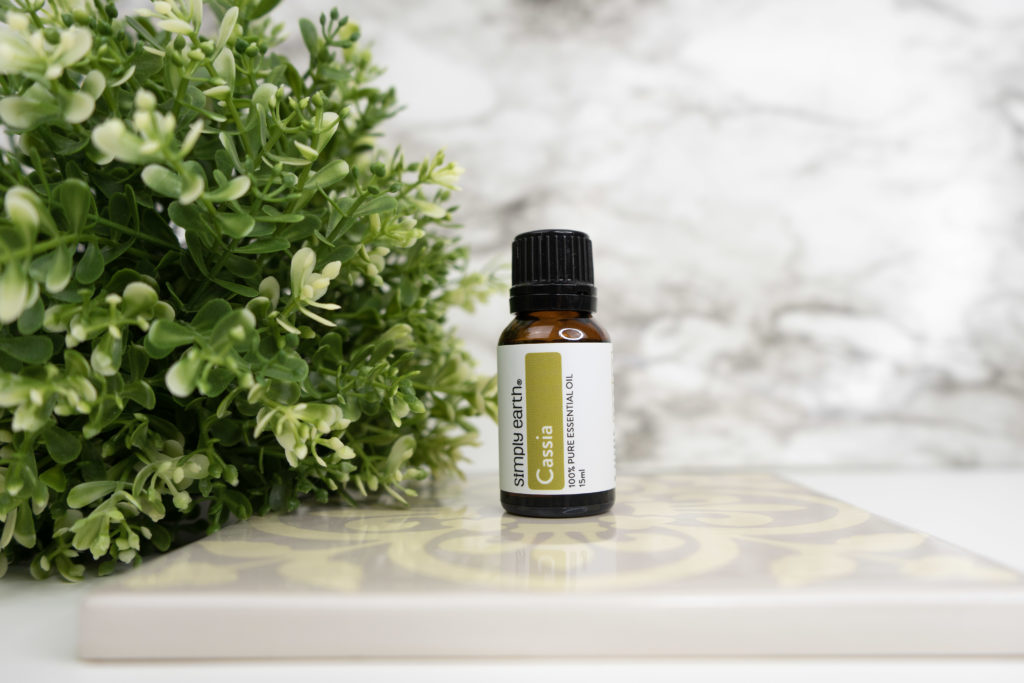
Cassia Essential Oil isn’t just a warm, spicy aromatic—it’s a product of place, tradition, and people. Deep in the remote mountains of Vietnam, our Cassia is cultivated with care by skilled local artisans who have spent decades perfecting their craft.
With over 25 years of expertise, these artisans transform hand-harvested Cassia bark through precise steam distillation, creating a pure and potent essential oil. Every drop reflects their deep-rooted knowledge, attention to detail, and commitment to quality.
But this oil tells a bigger story, too—one of empowerment and sustainability as we support the farmers in these mountainous regions with long-term, ethical sourcing relationships. This collaboration with the farm and farmers not only ensures the finest Cassia bark is grown, it also uplifts families and strengthens rural communities through sustainable livelihoods.
Safety Use With This Oil

Always dilute an essential oil when using it on the skin. This essential oil is unlikely to cause skin irritation when diluted properly. If the oil has been oxidized (left with the cap off for long periods of time) it is more likely to cause skin irritation. Check out this dilution chart for diluting this essential oil properly.

This oil is generally not safe to use if you are pregnant. Consult your doctor prior to use.

This essential oil is safe to use with kids 10+.

For more information on using essential oils with cats, check out this blog post.

Dogs may find this oil irritating. However, we do not expect your dog to be disturbed if you use this oil on yourself. Just be mindful of your pet’s behavior. For more information on using essential oils with dogs, check out this blog post.
We don’t recommend ingesting essential oils unless under the direction of a doctor certified in aromatherapy. For more information on why we don’t ingest essential oils check out this blog post.
*Please note: This post is a compilation of suggestions made by those that have extensively used essential oils and has not been verified scientifically with clinical tests nor reviewed by medical experts. It is anecdotal information and should be treated as such. For serious medical concerns, please consult your doctor. The statements given in this blog post have not been verified by the FDA
Add a Bold & Uplifting Aroma to Your Routine
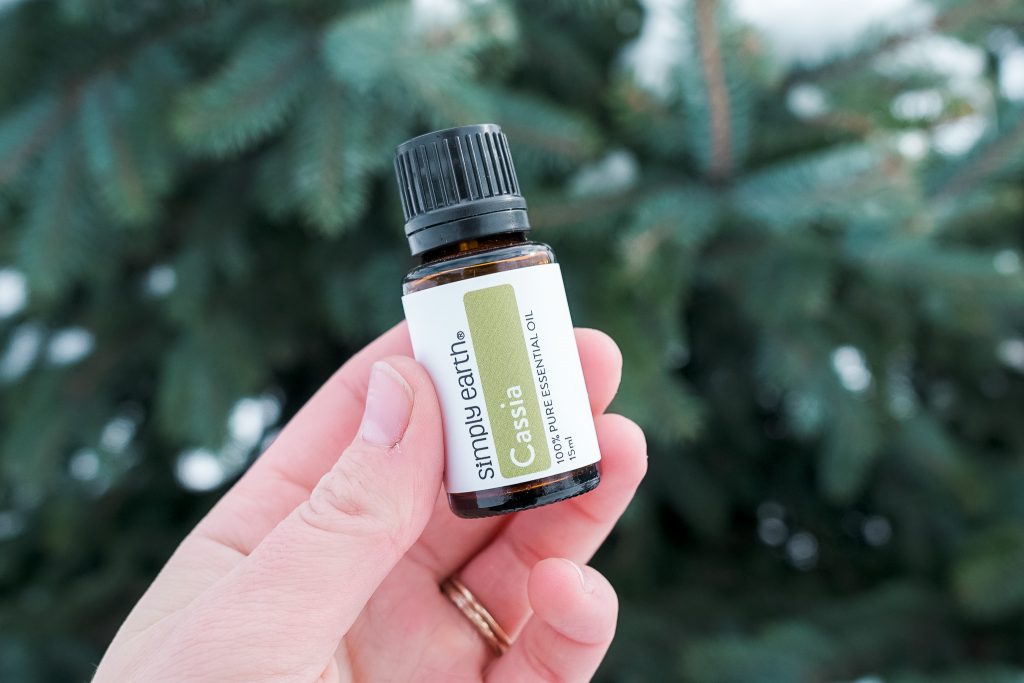
Cassia Essential Oil is more than just a beautiful scent—it’s a versatile ingredient that brings warmth, energy, and balance to your DIY creations. From personal care to home blends, Cassia adds a bold, spicy note that stands out in the best way.
If you’re ready to explore the world of essential oil DIYs, the Simply Earth Recipe Box makes it simple. With curated oils, easy-to-follow recipes, and natural ingredients delivered monthly, you’ll have everything you need to create safe, toxin-free products at home.
Ready to start making your own?
Grab your Simply Earth Recipe Box today—everything you need is just a drop away.
References:
- Himanshu S, Prerna C, Surender S. Evaluation of the anti-arthritic activity of Cinnamomum cassia bark extract in experimental models. 2018 Dec
- Pannee C, Chandhanee I, Wacharee L. Antiinflammatory effects of essential oil from the leaves of Cinnamomum cassia and cinnamaldehyde on lipopolysaccharide-stimulated J774A.1 cells. 2014 Oct
- Etaee F, Komaki A, et al. The effects of cinnamaldehyde on acute or chronic stress-induced anxiety-related behavior and locomotion in male mice. 2019 May
- Ooi LS, Li Y, Kam SL, Wang H, Wong EY, Ooi VE. Antimicrobial activities of cinnamon oil and cinnamaldehyde from the Chinese medicinal herb Cinnamomum cassia Blume. 2006
- A.T. Mbaveng, V. Kuete, in Medicinal Spices and Vegetables from Africa, 2017
- Imran Ahmad Khan, Abdul Aziz, Hafiz Shoaib Sarwar, Shaukat Hussain Munawar, Zahid Manzoor, Haseeb Anwar. Evaluation Of Antiemetic Potential Of Aqueous Bark Extract Of Cinnamon Loureiroi. 2014 Jan

